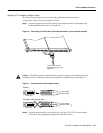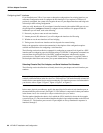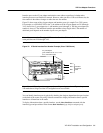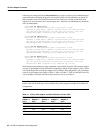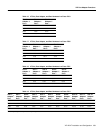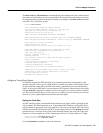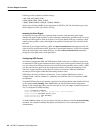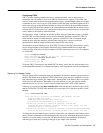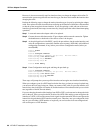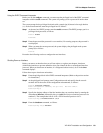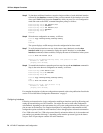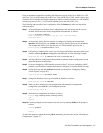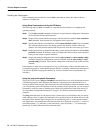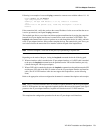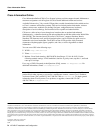
72 VIP-4R/4T Installation and Configuration
VIP Port Adapter Functions
Checking the Configuration
After configuring the new interface, use the show commands to display the status of the new
interface or all interfaces.
Using Show Commands to Verify the VIP Status
The following steps use show commands to verify that the new interfaces are configured and
operating correctly.
Step 1 Use the show version command to display the system hardware configuration. Ensure that
the list includes the new serial interfaces.
Step 2 Display all the current interface processors and their interfaces with the show controllers
cbus command. Verify that the new VIP appears in the correct slot.
Step 3 Specify one of the new serial interfaces with the show interfaces serial slot/port command
and verify that the first line of the display specifies the interface with the correct slot
number. Also verify that the interface and line protocol are in the correct state: up or down.
Step 4 Display the protocols configured for the entire system and specific interfaces with the show
protocols command. If necessary, return to Configuration mode to add or remove protocol
routing on the system or specific interfaces.
Step 5 Display the running configuration file with the write terminal (or show running-config)
command. Display the configuration stored in NVRAM using the show config (or show
startup-config) command. Verify that the configuration is accurate for the system and each
interface.
If the interface is down and you configured it as up, or if the displays indicate that the hardware is
not functioning properly, ensure that the network interface is properly connected and terminated. If
you still have problems bringing the interface up, contact a customer service representative for
assistance.
Using the ping and loopback Commands
The packet internet groper (ping) and loopback commands allow you to verify that an interface port
is functioning properly and to check the path between a specific port and connected devices at
various locations on the network. This section provides brief descriptions of these commands. After
you verify that the system and VIP have booted successfully and are operational, you can use these
commands to verify the status of interface ports. Refer to the publications listed in the section “If
You Need More Configuration Information” on page 2, for detailed command descriptions and
examples.
The ping command sends an echo request out to a remote device at an IP address that you specify.
After sending a series of signals, the command waits a specified time for the remote device to echo
the signals. Each returned signal is displayed as an exclamation point (!) on the console terminal;
each signal that is not returned before the specified time-out is displayed as a period (.). A series of
exclamation points (!!!!!) indicates a good connection; a series of periods (.....) or the messages
[timed out] or [failed] indicate that the connection failed.



